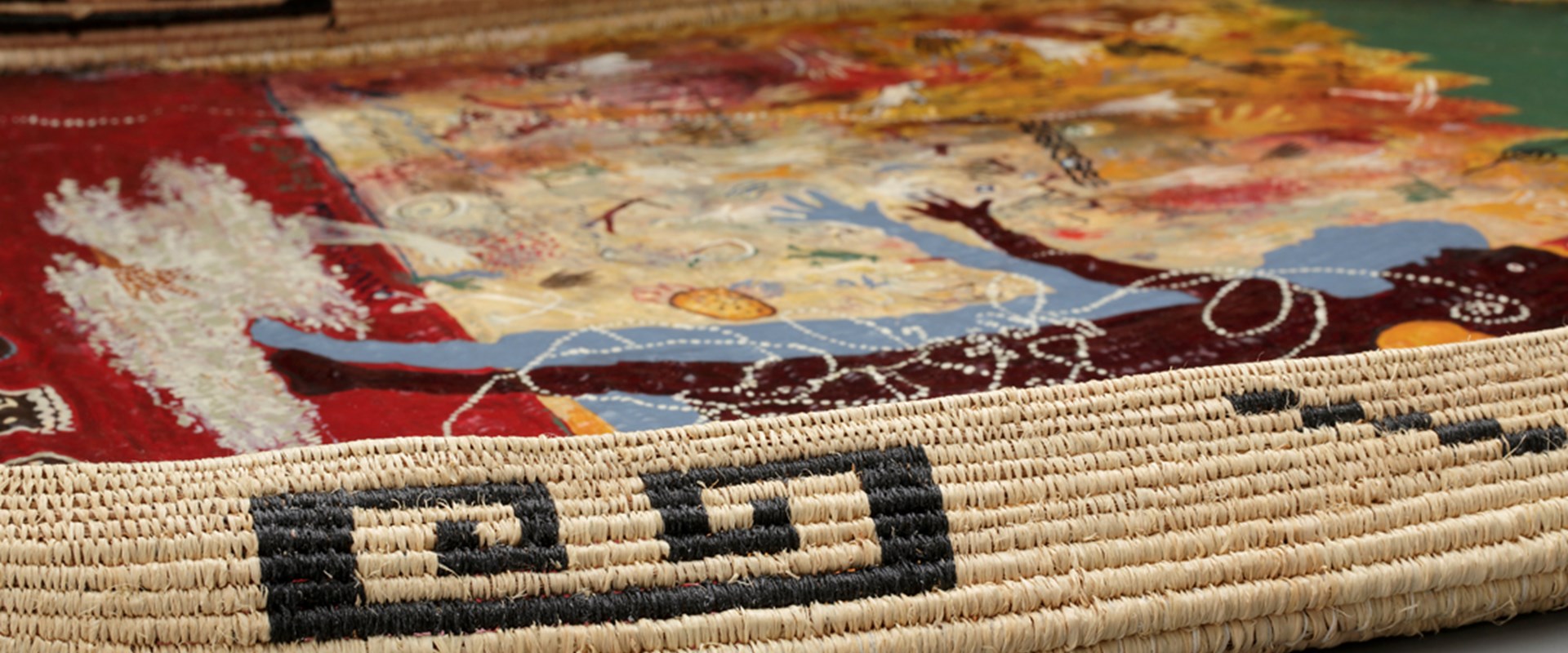Key in a search term below to search our website.
Key in a search term below to search our website.
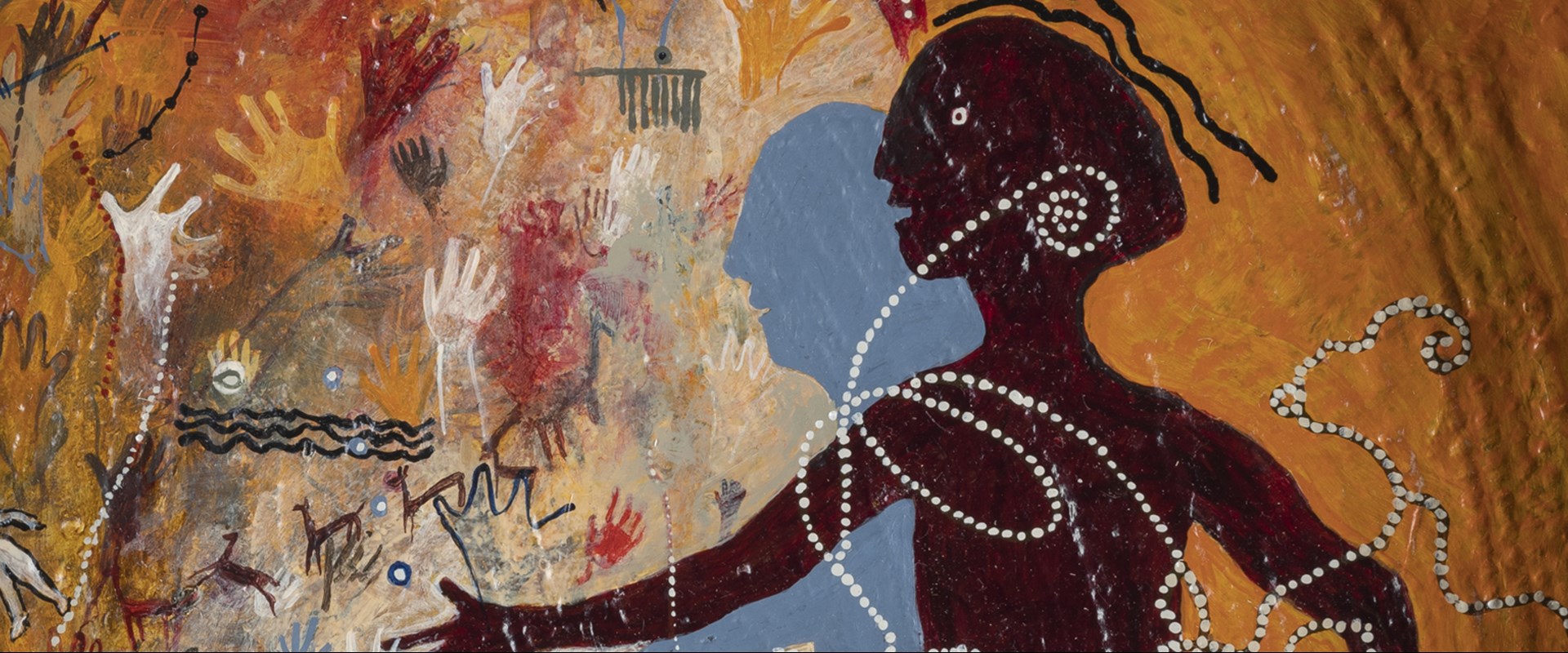
Mapuche represents Elizabeth Whyte Schulze’s aim to carry on the tradition of basket making, whilst also transforming it into a contemporary canvas for storytelling.
Mapuche marks a change in Elizabeth Whyte Schulze’s artistic practice, as she combined basketry and painting.
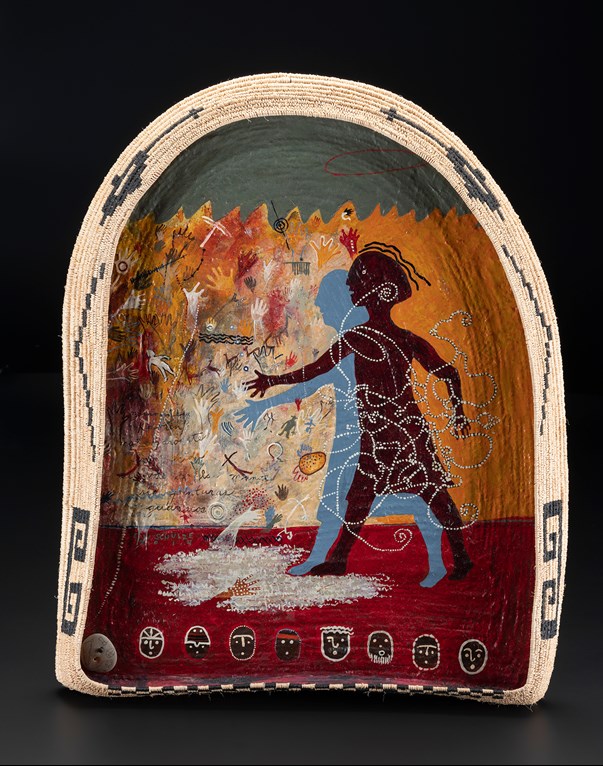
Mapuche, Sculpture, Elizabeth Whyte Schulze, Worthington, USA, 2014.
“I want my artwork to inspire a complex range of personal emotions for the viewer. My goal is to carry on the tradition of the basket, wrapped in a contemporary story that speaks to anyone who ventures out into the world and learns to appreciate a culture that is different from their own.- Elizabeth Whyte Schulze, 2018
As a student in the 1970s 'fibre revolution' in Boston, Whyte Schulze discovered basketry as the preferred medium for her sculptures. Widely travelled, her experiences of other cultures have become an important inspiration. She is fascinated by cave painting and rock carving, which she uses to connect the past and present.
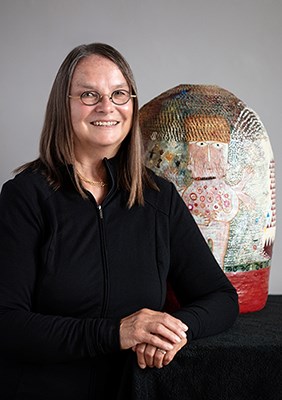
Elizabeth Whyte Schulze © John Polak, 2018
Delve into a few of the details from this Mapuche artwork below, or visit our Artistic Legacies gallery to explore further.
The handprints in the painting refer to rock art around the world and were inspired by a famous site in Patagonia, called the Cave of Hands. With the handprints, Whyte Schulze reminds us that the past still matters.
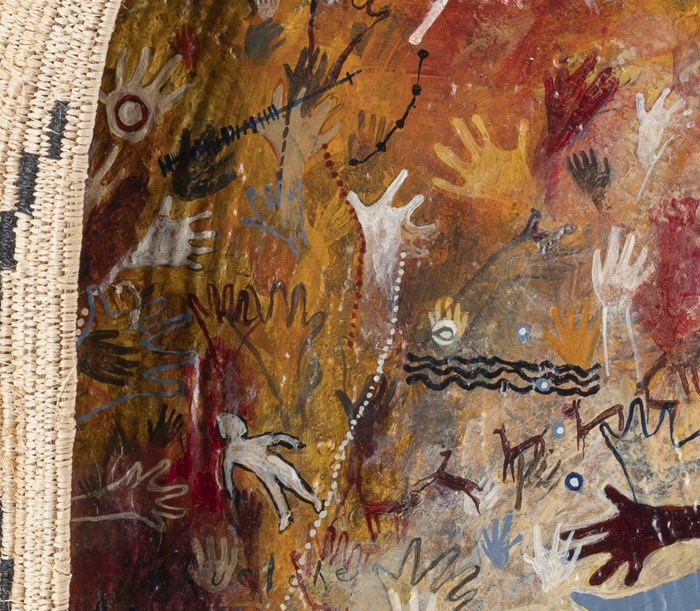
The central figure of a woman reaches out to the hands in front of her, a powerful symbol of the relevance of the past in our lives.
Artist’s interpretation:
‘She is enveloped in a dotted web symbolic of her floating spirit. This symbol I developed after visiting Turkey in late 2014 from the many decorative lines used in the elaborate tiled walls.’
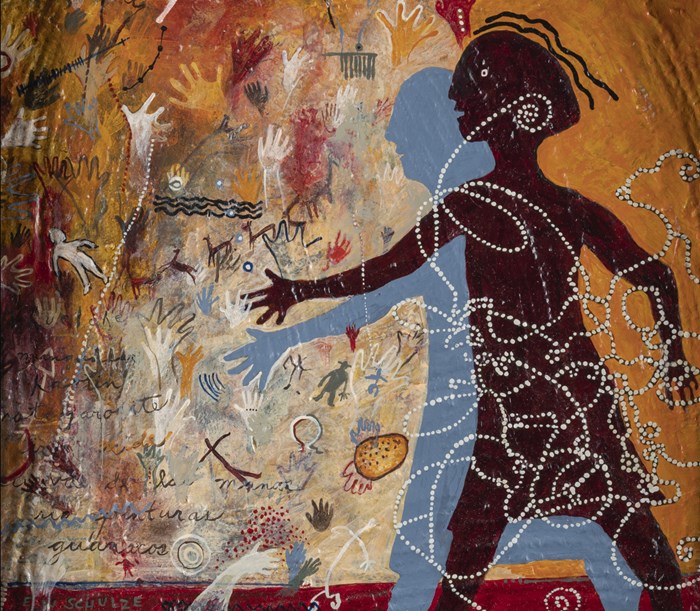
The row of abstract faces are inspired by American Northwest Coast peoples who carved similar designs on boulders.
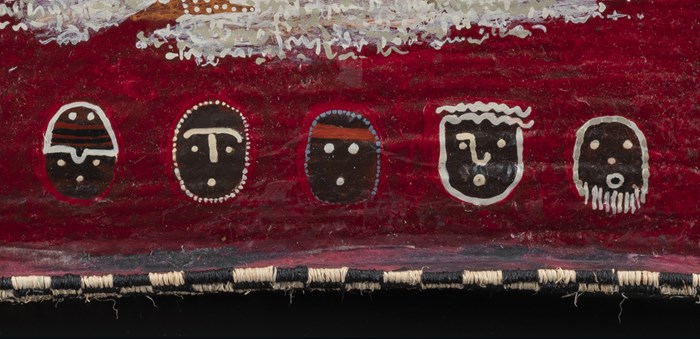
The stone on the bottom left is marked with signs. Throughout her career, Whyte Schulze has used stones in her artwork and they make a physical reference to ancient caves and rock carvings in the American Northwest Coast.
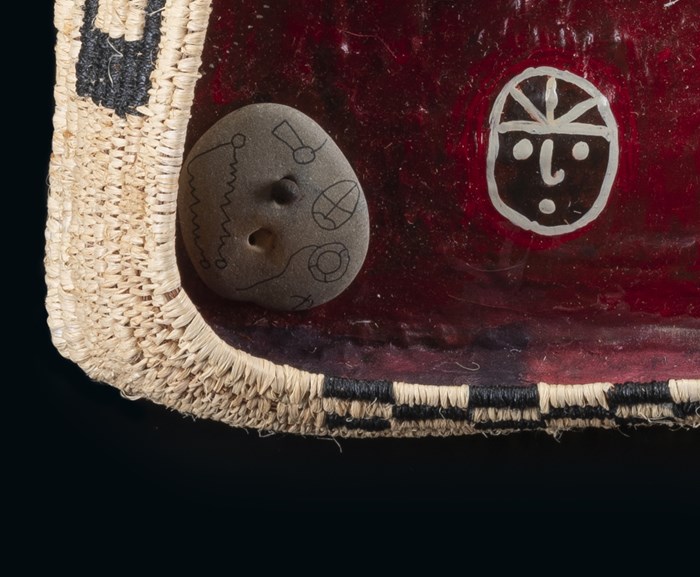
Whyte Schulze has combined coiled basketry, a technique which is used widely throughout the world, with woven patterns inspired by Mapuche textiles.
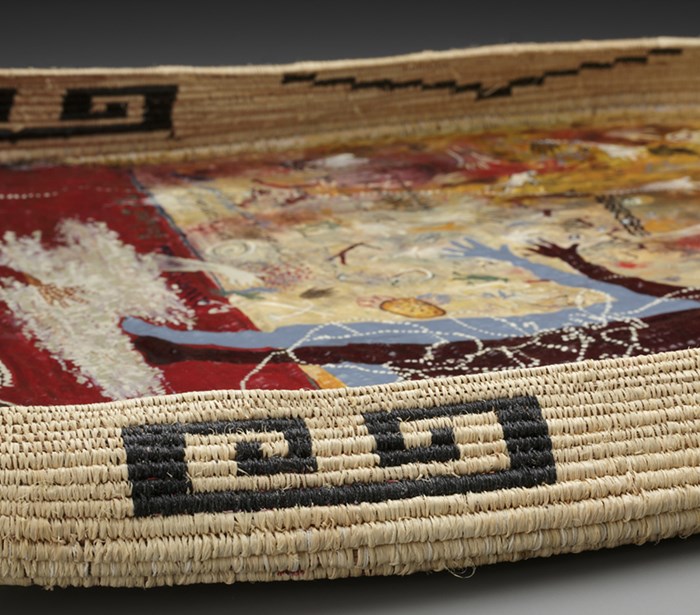
This coiled basket is an unusual combination of oval and square shapes, the result of this technical challenge is visible on the reverse of her Mapuche sculpture.
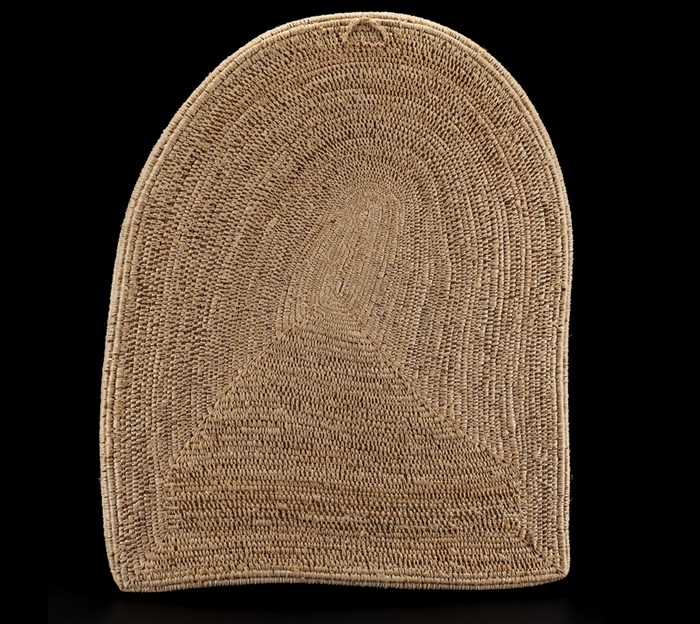
Date
2014
Made by
Elizabeth Whyte Schulze
Made from
Raffia, linen, paint, stone
Made in
Worthington, USA
Museum reference
V.2018.20
On display
Artistic Legacies, Level 5, National Museum of Scotland
Did you know?
Basketry shares a decorative language of styles and motifs with other art forms. For example, like woven textiles, the ornamentation can be integrated within the structure of the basket weave. This type of design has become deeply associated with the artistic traditions of north and south America.
